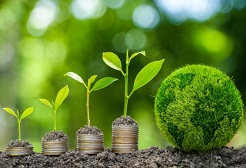BY YANET FANTAYE WOGAYEHU – The implementation of African Nationally Determined Contributions (NDCs) requires nearly $3 trillion, including about $2.5 trillion between 2020 and 2030, says a UN agency.
There is a substantial financial gap in climate finance in Africa, according to the United Nations Economic Commission for Africa (ECA). “Yet climate disasters cost between 5 and 15% of GDP each year,” the Commission says.
This figure was discussed last week at the eleventh Conference on Climate Change and African Development (CCDA11) in Nairobi, Kenya during a session on climate finance, moderated by Harsen Nyambe of the African Union Commission.
With the support of developed countries and the private sector, Africa must take ownership and define its energy transition to meet these challenges. The continent has abundant renewable energy resources, potential for green hydrogen production, essential minerals for renewable energy products, and natural capital for carbon sequestration.
Jean-Paul Adam, at the Office of the Special Advisor on Africa (OSSA) said ECA has worked closely with member states to support the green transition through efforts such as the Sustainable Debt Coalition (SDC), and emerging debt-for-nature swaps to close the financial gap. Africa’s rich marine ecosystem is also at the centre of concerns, with initiatives such as the Great Blue Wall, which promotes sustainability and job creation.
Stephen Funso of the African Development Bank (AfDB) stressed that adaptation is a priority for Africa. The AfDB’s approach is to increase resources for priority sectors. According to Stephen Funso, the Bank will continue to strengthen and mobilize resources in each country. To finance resilience, innovative solutions are the key priority to engage the private sector.

